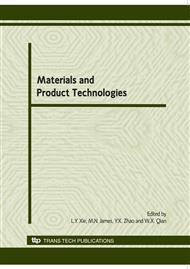p.70
p.75
p.80
p.90
p.95
p.100
p.105
p.111
p.116
Cyclic Deformation Characters and Description of the Cast Steel for Chinese Railway Rolling Wagon Bogie Frames
Abstract:
Cyclic deformation characters and description method are investigated to the grade B cast steel for Chinese railway rolling wagon bogie frames. Incremental step test method with 8 strain amplitude loading mode were employed. Results reveal that the material acts as non-Masing behaviour with a significant Bausinger’s effect and appears a slight cyclic softening. Great of dimples in the transient fracture district indicate that present material is ductile. Significant discrepancy between the monotonic and cyclic beaviour was revealed to indicate that there is different monotonic and cyclic deformation behaviour. The scattered cyclic stress-strain relations indicate that appropriate description for the cyclic deformation of present material should be a probabilistic modeling. And then, a probabilistic modeling with measurements of survival probability and confidence is developed to give a good description to the cyclic deformation behaviour.
Info:
Periodical:
Pages:
95-99
Citation:
Online since:
June 2010
Authors:
Keywords:
Price:
Сopyright:
© 2010 Trans Tech Publications Ltd. All Rights Reserved
Share:
Citation:


